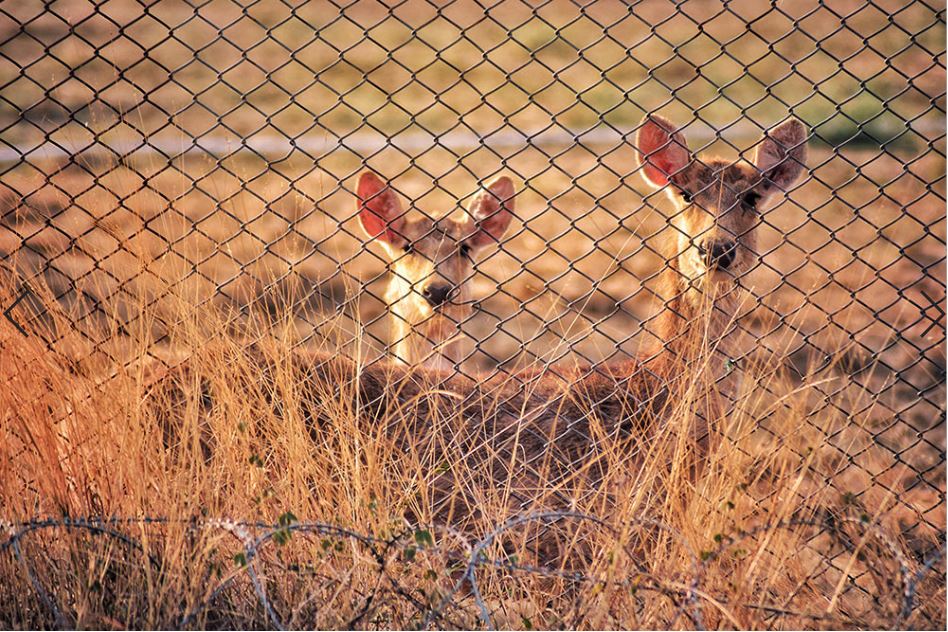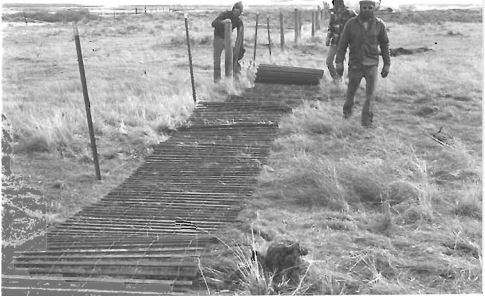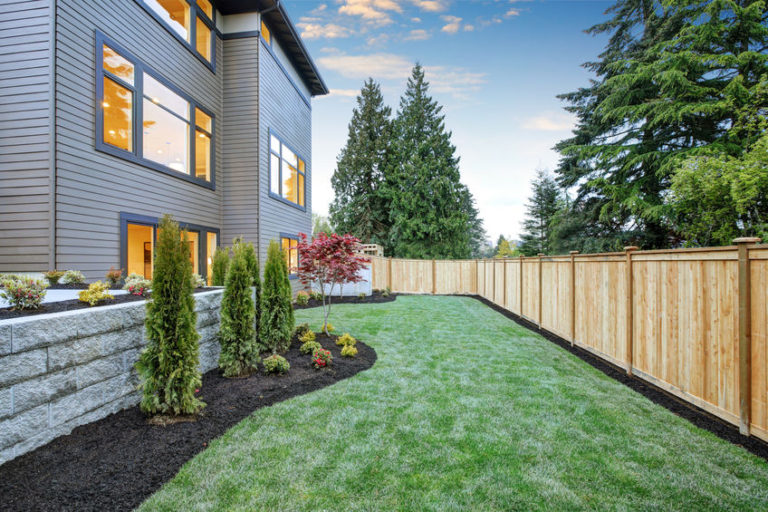
Different Types of Fencing You Can Use to Keep Out Deer in New Jersey
Some conventional fences like chain-link fence can be used as deer fence if it’s at least 7.5 feet tall. Solid privacy fences can be effective deer fences under 7.5 feet high because deer can’t see if there’s danger on the other side.
They are likely to remain cautious and move on instead of jumping the fence. But both of these types of fencing are more expensive than deer fence.
Today, the popular choice for fencing out deer is a Polypropylene-mesh kind of plastic fencing or metal deer fence. The plastic mesh fence is less expensive and has attractive features that gardeners and property owners prefer. The metal deer fence isn’t as attractive looking but it lasts for many years.
The following article gives you more information and considerations to help decide which type of fence you should choose to keep deer off of your property.
Deer fencing offers the best solution for dealing with the problem of unwanted deer visiting your New Jersey yard or landscape. There are more reasons for wanting to keep deer away from your property than just protecting your favorite shrubs and plants from becoming a meal for these animals. It’s important to practice effective deer control because the ticks that deer carry can drop into your yard, bite you, and give you Lyme disease. You can poisoning your landscape with spray to kill the ticks, but fencing deer out is an effective solution for
- Avoiding toxic chemicals
- Keeping your pets safely enclosed in your yard
- Protecting your plants and gardens
- Keeping disease-bearing deer ticks away
One reason lots of people get a fence for their yard is to prevent deer from coming in and eating their trees, bushes, or gardens. There are a number of fences that can accomplish this goal. Fencing is the only real deer-proofing method there is (assuming your fence is the right construction for your location and animal population, and is well-maintained). No other tactic offers complete control, keeping deer out of the garden.
Deer fence is a good choice for those who want a practical, cost-effective barrier without regard for good looks. If you’d prefer an aesthetically appealing fence that will also keep deer out, a chain link fence may be more appropriate.
Two primary deer fence options are polypropylene plastic and metal deer fence. There are pros and cons of each. Plastic is practically invisible because it’s very thin. It won’t rust like metal, but it can be chewed through, and long term sun exposure will weaken it. Metal deer fence won’t maintain it’s good looks for long, but it will keep out deer for many decades.
Deer and Fences

Height
Deer can jump up to 15 feet high. Though they can jump that high, your deer fencing solution doesn’t need to be that tall to keep out deer. They aren’t looking to jump as high as they possibly can, every chance they get. It’s easier to go around or through a tall fence, than jump over it. Even a 6 ft fence can deter them if they aren’t sure about the landing surface on the other side.
If the deer can’t see where the top of the fence is, they are not going to take the risk and jump on a guess. This is because deer see colors in the yellow, dark blue, and UV spectrum best. Deer fencing doesn’t reflect these wavelengths well, so the deer can’t always make out the boundaries of the fence. Deer also have a unique head shape and eye placement on the sides of their heads. This is good for keeping an eye on predators, but doesn’t help their depth perception.
These factors combined mean you don’t have to build a 15 foot high fence to keep deer out. A 6 foot fence is plenty to deter deer from jumping. Typical deer fencing comes in 6, 8 and 12 foot heights. The taller the fence you buy, the higher the cost of the materials and the labor to install it.
Material
Deer fencing is usually made of polypropylene plastic or PVC coated metal. PVC coated metal fences are more expensive, but are more durable and are overall better at keeping deer out. One of the ways deer can get through a plastic fence is if another smaller animal makes a small hole in it. The deer can tear the hole open wider allowing it to get through. If a deer runs fast enough, it might even be able to break right through the plastic fence. If you do choose polypropylene mesh, select a grade that has a breaking load of 800+ pounds. The “breaking load” figure signifies how strong the product is (deer are powerful animals that can rupture plastic fencing that isn’t strong enough).
Vinyl coated chain link fencing prevents deer from breaking through a fence, and can easily be constructed tall enough to deter jumping.
Cost
Deer fencing prices are generally affordable and don’t tend to be expensive. Metal deer fence will cost from $1.30 to $3.10 per linear foot and plastic deer fence is anywhere from $.85 to $3.35 per linear foot.
The wide range of pricing is determined by the gauges of the steel wire or thickness of the plastic. If you have agressive deer, then tall metal deer fence is the best defense.
Other elements that affect the cost of your deer fence installation are deer fence gates, tension kits, ground stakes and warning banners.
Most deer fence is attached to metal posts. The use of 4″x4″ pressure treated or cedar posts provide a more permanent installation and improve the look of the fencing. Homeowners may like that the deer fence is practically invisible and blends into the landscape, but that comes with drawbacks too. People who are concerned for the welfare of the deer will attach light colored streamers or plastic containers to their fence so that the animals can see the barrier.
You can make plastic deer fence more effective by reinforcing the mesh with several strands of high-tensile wire running horizontally through the top, bottom and middle. Also be sure to flap and pin down at ground level with earth staples to prevent invasions from below.
How does Chain Link fence measure up as a deer deterrent?
Though chain link fence is an affordable option compared to other types of permeant fencing, it’s more expensive than deer fence. Also, keep in mind to buy galvanized steel fencing instead of aluminum chain link to avoid becoming damaged by weather elements.
Chain link fences are heavier than the lightweight material that deer fence is made from which makes it harder to install. They are also far more visible from a distance than deer fence.
Deer fencing varies in cost, visibility, effectiveness, and durability. The whole process, regardless of your finances, involves weighing the benefits and disadvantages of each product.



